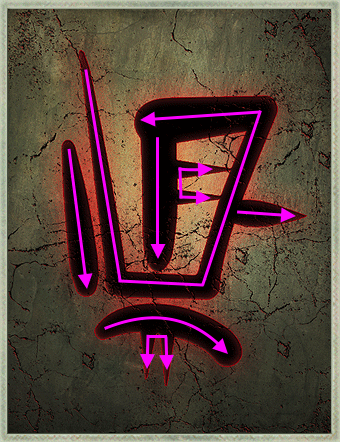As in, what exact letter is each of the seven in the Name-Which-Burns? Is there any indication of the Name’s spelling anywhere in SSea? Do any of you have personal theories about it? I don’t know of any first-party lore covering the specific contents of the Name, but here’s a few ideas I’ve come up with after thinking it over:
- T H E N A M E is a quite literal-minded answer[/li][li]although the old theories about a connection between Salt and Mr. Eaten don’t hold much water, both C A N D L E S and M R E A T E N have seven letters. I think it’s a cute coincidence.[/li][li]alternately, Failbetter didn’t ever bother to come up with a single particular spelling and decided on 7 letters for the significance of the number
edited by Anchovies on 5/2/2017
